Regenerative and Rejuvenating
Stewardship for the environment has never been more important, accessible, and fulfilling.

“It looks like an old man, just beginning to bald,” Debbie says as she points to a burn area on the side of a mountain. The mountain’s treeline is receding as the Forest Service removes the widow makers–the burned trees whose upright positions are anything but stable–from along the road. The trees behind the clearing of sawdust stand tall, burned, and barren, which from a distance look exactly like the frail wisps of hair living atop a seasoned man’s head.
Debbie has a raw voice, high and loud, that hides no emotion. An audible sigh seems to bring a little peace as she looks at the mountains she and her husband have been coming to for decades. We drive past a picnic table and a rock that gently crops out into a bend in the river. It has a spectacular view downriver to the drought and devastation and upriver to the lush forest and towering snow-capped Middle Sister. Debbie gasps, “That used to be our secret rock. The forest and moss were so thick, no one driving by knew it was there! I just can’t believe how exposed it is to the road now.”
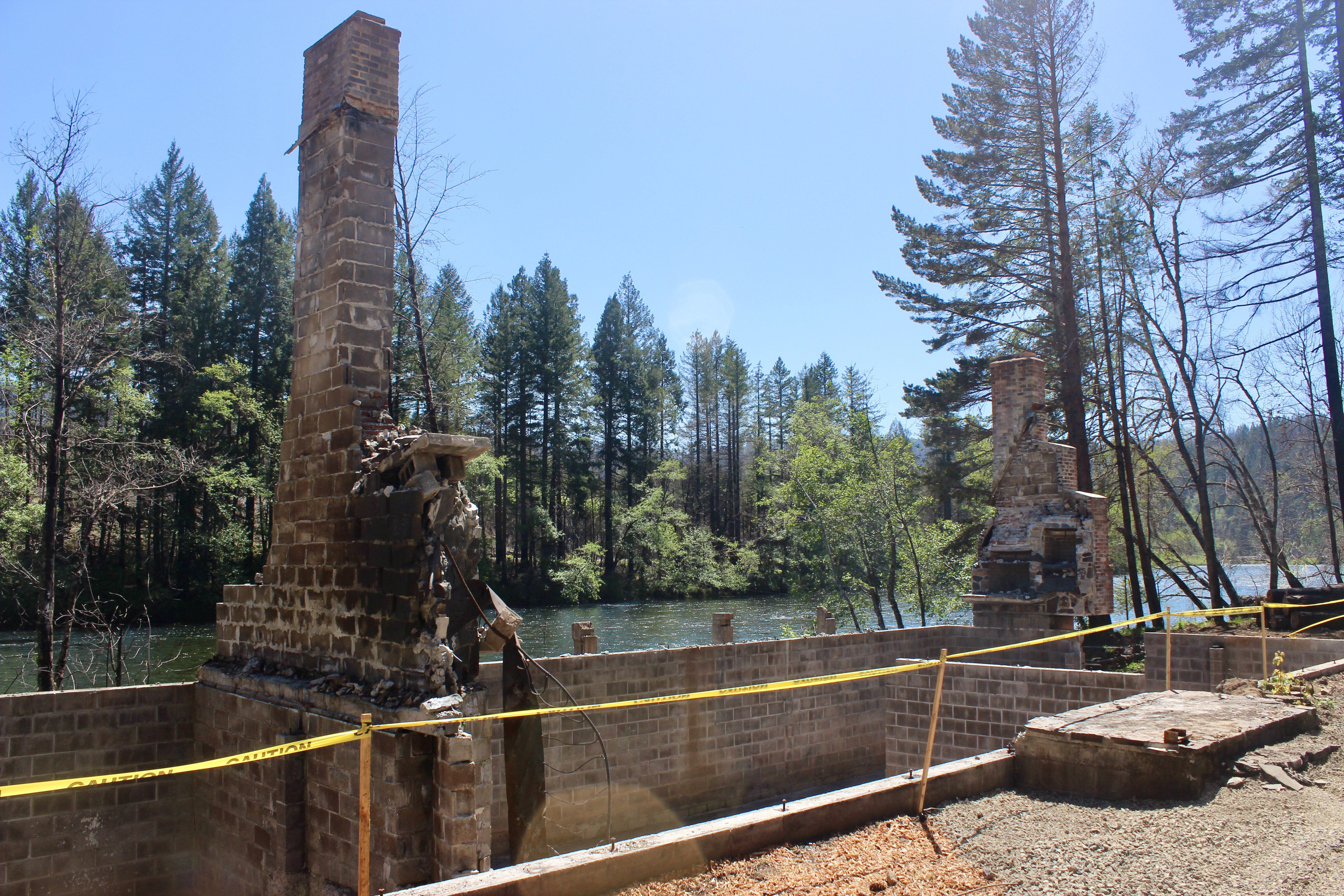
The Holiday Farm Fire began on September 7, 2020, just west of McKenzie Bridge, Oregon. Strong winds pushed the fire through the communities of Blue River, Finn Rock, Nimrod, Vida, and Leaburg, burning a total of 173,439 acres in a mosaic pattern, forced over 4,700 Lane County residents to evacuate, and burned more than 430 homes. The area is a logging community that took the hit not only personally but also professionally. Non-logging enterprises in the area focus on outdoor tourism; another industry halted by the fire. A year later, it is time for the community, close and far, to pitch in on restoration projects and regenerative trips. This citizen’s effort is significant because, as another side effect of COVID-19, 47 full-time Oregon Park and Forest employees were laid off, and 338 seasonal staff were not rehired in 2021. Therefore, it is essential that everyone pitch in to restore the forest.
Now in their grandparent days, Debbie’s husband isn’t in shape to climb onto rocks in the river, and her children are tied up raising kids of their own now. But, Debbie still wants to scurry over rocks, confront her burned mountains, meet other travelers, and give back. First Nature Tours has organized a weekend trip underwritten by Travel Oregon's Destination Ready Program. We are volunteering with Cascade Volunteers and the National Forest Service to maintain trails, learn about forest fires, and, of course, adventure. Our regenerative trip goes above and beyond sustainable travel by leaving our destination better than we found it.
Arriving at Horse Creek Lodge
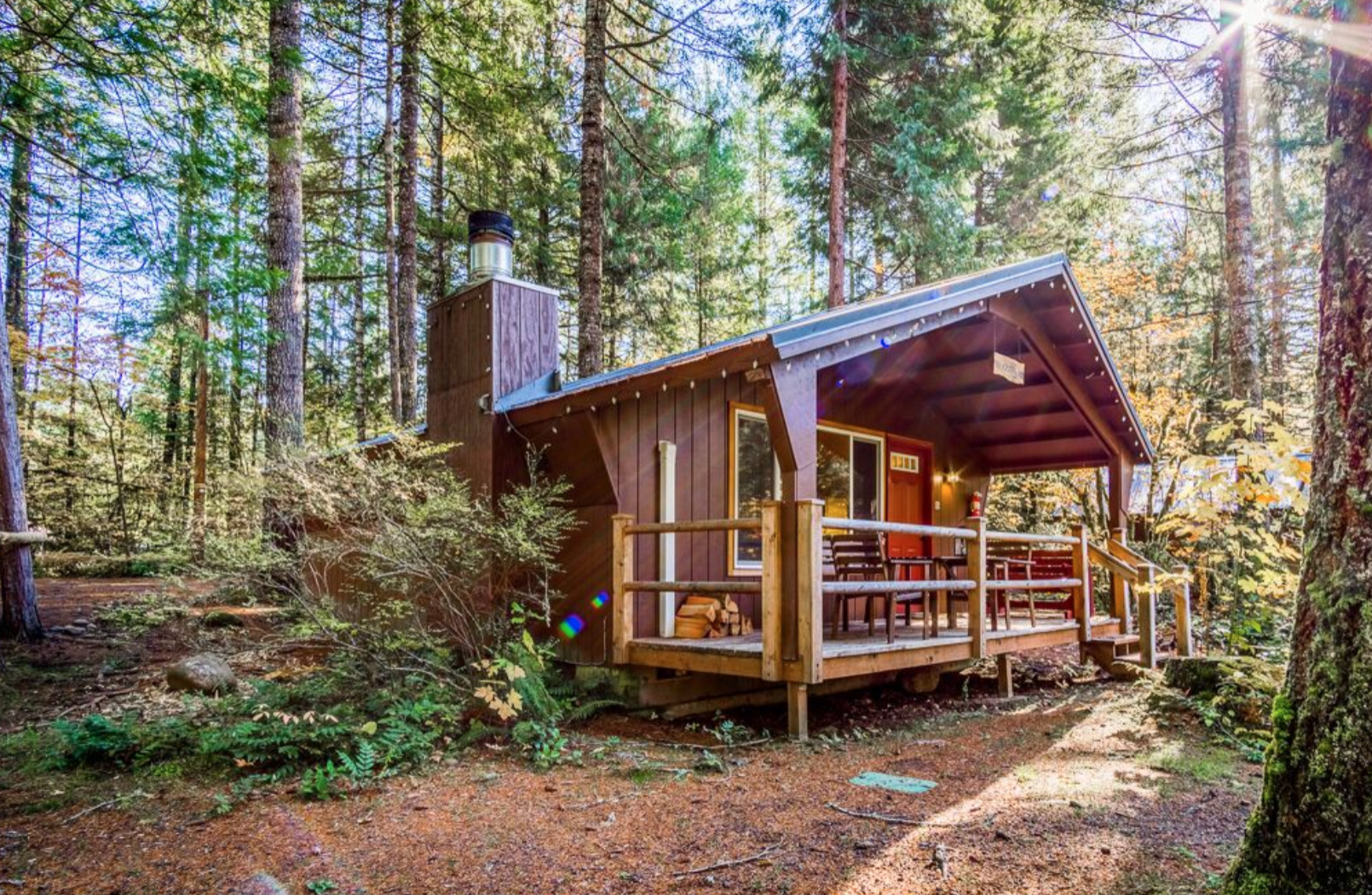
Ahhh adventure! The highly desired but extremely unattainable dream we all share this year. Except now, it’s not a desire. Instead, it’s today’s agenda. First Nature Tours has put together a moderate-intensity regenerative trip centered around trail maintenance work with Cascade Volunteers. The trip also features accommodations at The Horse Creek Lodge, plus mountain biking, river rafting, group dinners, campfires, and lots of group discussion over the term “moderate-intensity.” There are eight of us in our group, and aside from one couple, we are all new to one another.
Our trip started on May 14th, a day after the CDC announced that fully vaccinated people no longer required masks. Because six of the eight on our trip are fully vaccinated, it made the entire trip feel like COVID-19 did not exist. Of course, we still wore masks into restaurants and stores and if sharing a ride with non-vaccinated people. Otherwise, we had all the natural social distancing, fresh air, and medical records to make the weekend feel "back to normal."
“And we are here guys!” says Kieron, our First Nature Tours guide for this weekend, as we pull up to our cabin. “Let’s unload, then everyone who is mountain biking, head up to the Lodge, and they will get you set up.” Now, when I say Lodge, people might picture a ski lodge with sliding glass doors, a high-ceiling reception area, and required shirts and shoes. Horse Creek Lodge, on the other hand, falls somewhere between summer camp and home. The two owners, Gary and Alyssa Brownlee, met river rafting. They fell in love, found the Lodge on Craigslist, bought it, brought on local guides to take guests and visitors mountain biking and river rafting down the McKenzie River. They can be found on their front porch with their pup, or around our campfire at the end of the day. They are helpful, kind people who make you feel right at home.
Mountain Biking
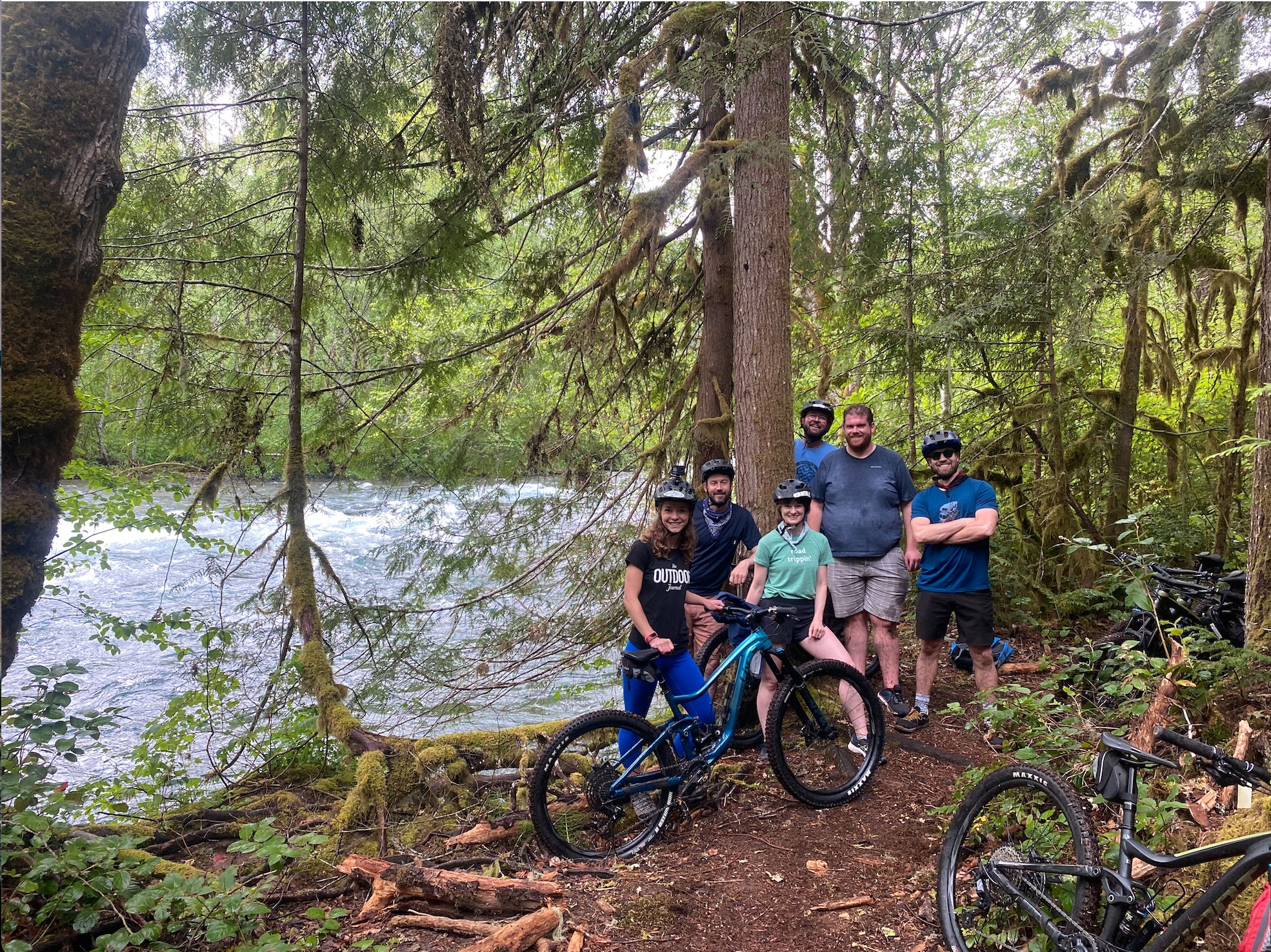
The group quickly unpacks, heads to the Lodge’s garage, and finds the bike labeled specifically for them (We were asked ahead of time our height and weight, so the bikes all set up for us when we got there!). We are dropped off at the trailhead and immediately greeted by a freak downpour. So this is where the “moderate-intensity” becomes a slight question mark. Our biking guide Alex has this calm composure that stems from his deeply laid-back nature. So as all us novice mountain bikers send each other quick looks questioning whether we are really doing this or not, Alex says, “Well now the people in the back won’t have to suck up our dust.” He starts down the trail, eliminating any need for hesitant discussion of bailing. The trail is narrow, about half the width of the hiking trails in the area, and the roots and rocks that polka-dot the trail are slick and wet. I go slow at first, only to find that the slower you go, the more your tires catch on every surface, threatening your balance. So I turn up the gear and accelerate the bike forward, finding exhilarating energy as I feel my flow state increasing.
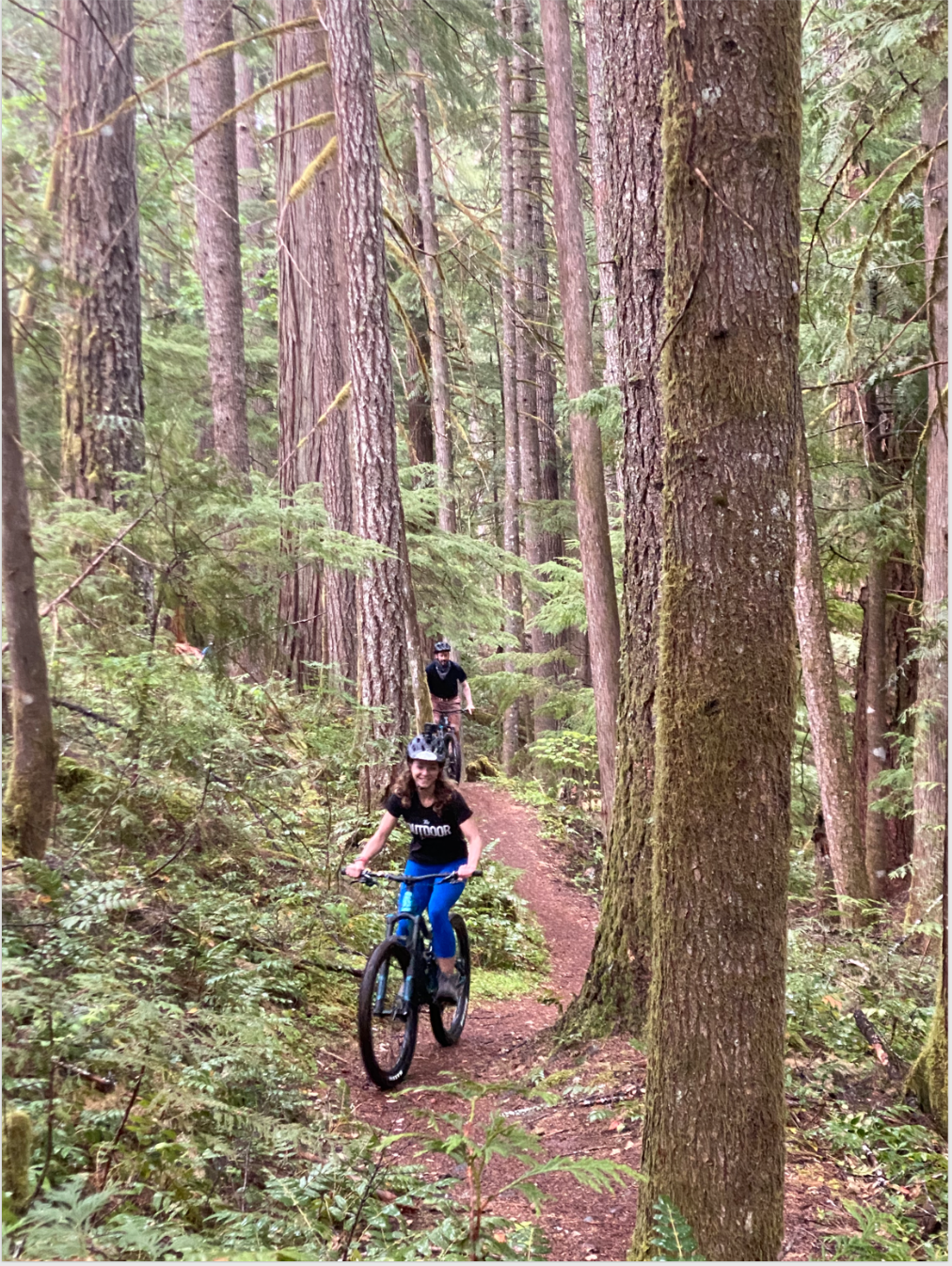
Flow state sports are sports where your enjoyment of it is entirely based on your skill level, like surfing, skiing, and skateboarding. The better you get, the more fun you have. There is also an addictive quality to the incremental, but inconsistent increase in your abilities. For me, this was a period of massive improvement at the sport, as I quickly moved through the first rudimentary skills (learning which brakes to use and when, figuring out how to move my seat up and down while riding, learning to make sharper turns by sliding my back tire out a little, and finally releasing my death grip on the handlebars).
Going into the weekend, I was most unfamiliar and hesitant about mountain biking. But after the ride, I was sure nothing else that weekend would top it. I felt so alive, the adrenaline still beating through my system and the burning of my muscle reminding me how rewarding trying new sports can be, or just trying new things in general.
For dinner, we all head to a small local restaurant, The Obsidian Grill, order beers and burgers and pile in around a picnic table. My tripmate Adam put it best when he said, “You know I always love coming on these kinds of trips because even though I don’t know anyone, we have SEVERELY overlapping interests that make us fast friends.” Side conversations break off about local flora and fauna, how one trip member is living completely off the grid, and Debbie’s ambitions of simulating van life on the Renaissance Fair circuit. When we come back from dinner, everyone helps to build a fire, we lament that we don’t have s’mores makings, and it seemed only fitting that like any good Oregon campfire, we end by telling the tales of Bigfoot.
Time to Give Back
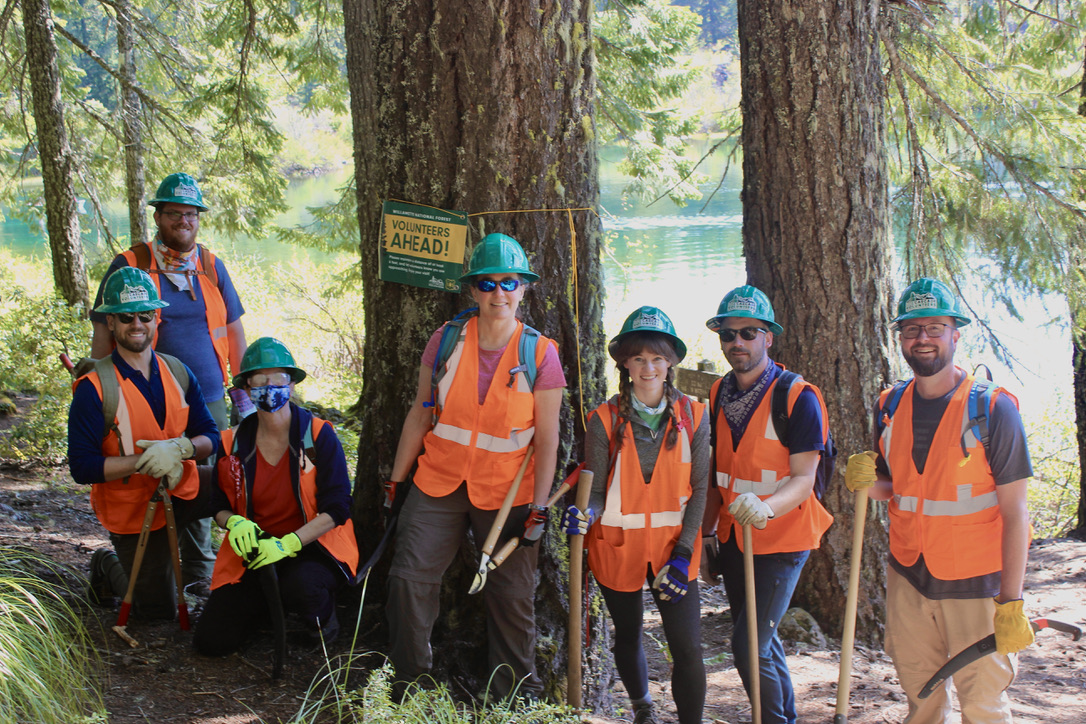
“Everyone grab a dutchie, loppers, or a shovel. We are looking for Vine Maple disrupting the trail,” says Rodger Lee, Trails Foreman with the US Forest Service. “When it comes to us, and trail maintenance, sometimes we gotta go through and nuc an area. Otherwise, people will make their own trails, called social trails, to find a way around it. That’s what we don’t want.”
With COVID-19 encouraging more people to travel outdoors, National Parks and Forests are seeing a huge increase in their trail user numbers. Additionally, last year’s fire decimated trails in the area, meaning the trails left untouched by the fire will have even more traffic. Places in Oregon, like Clear Lake and Blue Pool, that used to be covered in moss are now bare because hikers, unfamiliar with trail etiquette, wander off the path and trample surviving flora and fauna. “We are just trying to better guide the flow of people to protect our trails from environmental degradation,” says Rodger.
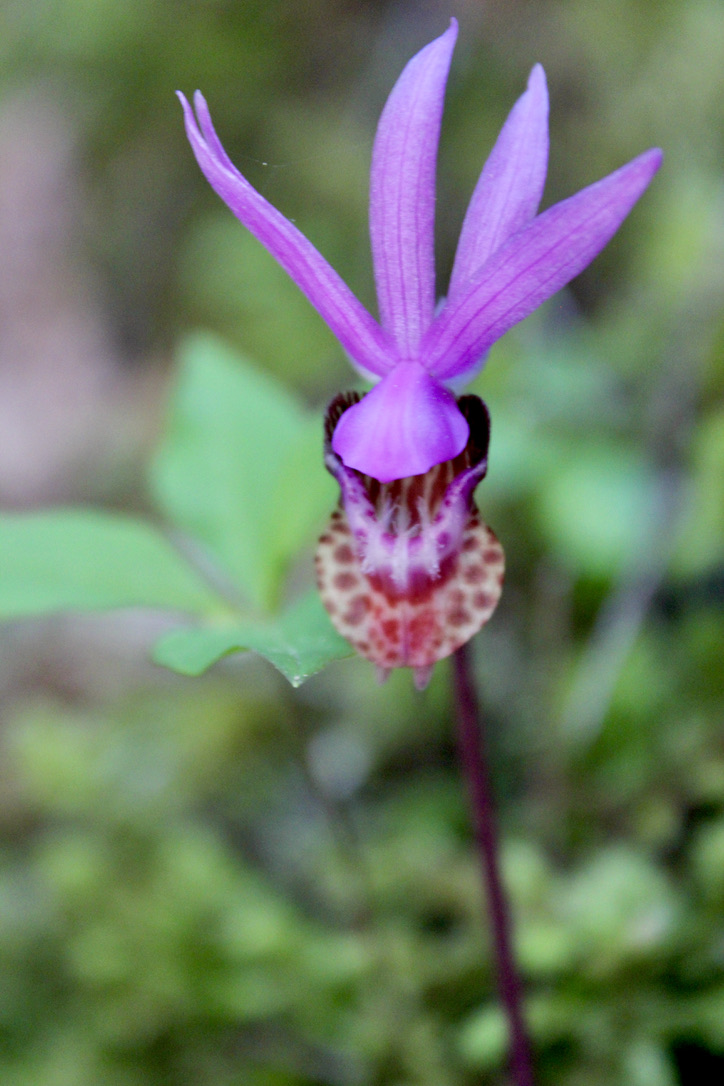
Once we all have our safety gear and instructions we start off on the trail. It is a flat five and a half miles long around Clear Lake. That sounds about right for “moderate-intensity.” At first, there are only small branches and roots to clip and clear but once we start to round the lake, we see the areas Rodger is asking us to “nuc”. The tools make the cutting and clearing pretty simple but it is still hard work clipping off the branches and tossing them away from the trail. Long pants and shirts prevent millions of tiny cuts and ward off tics or other bug bites. But it also makes us warm as we start to round the corner of the lake towards the sunny side. Much like mountain biking, the work pushes our group towards the edge of our comfort zone, turning up the heat, literally and metaphorically. We again debate the term “moderate intensity.” But then every single hiker that passes by chimes in with a “thanks for all your help on our trails-- we really appreciate it!” and just like that, we are back in business, swinging and lopping. Kieron would quickly chant, “can’t stop, won’t stop, gotta lop!” as we walked along.
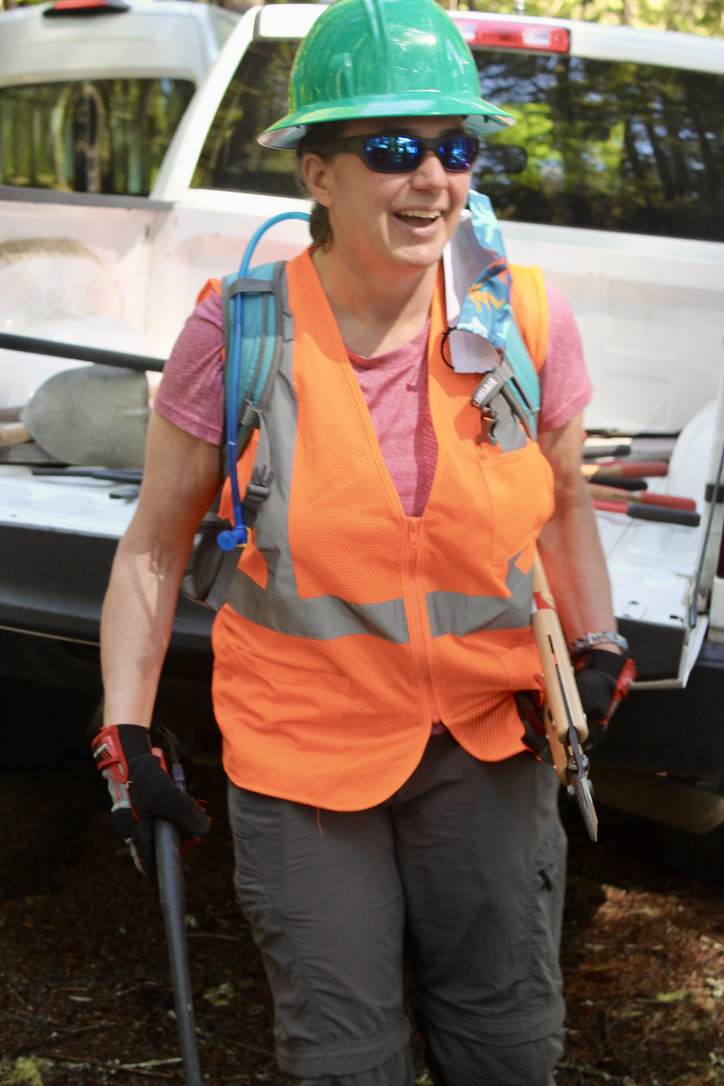
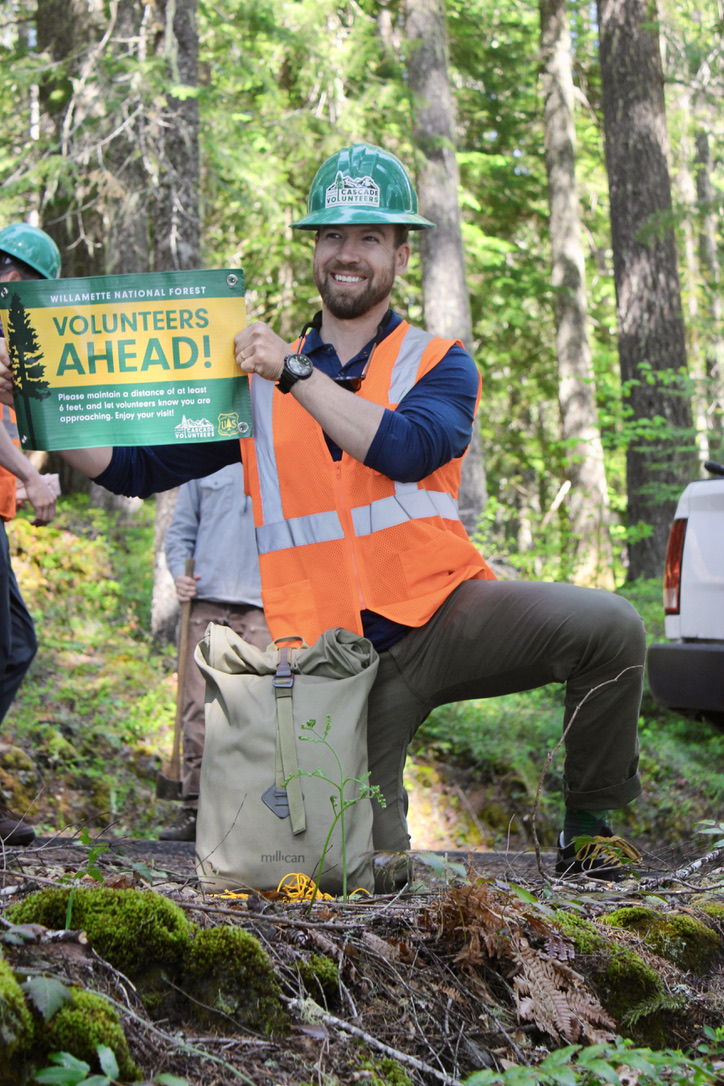
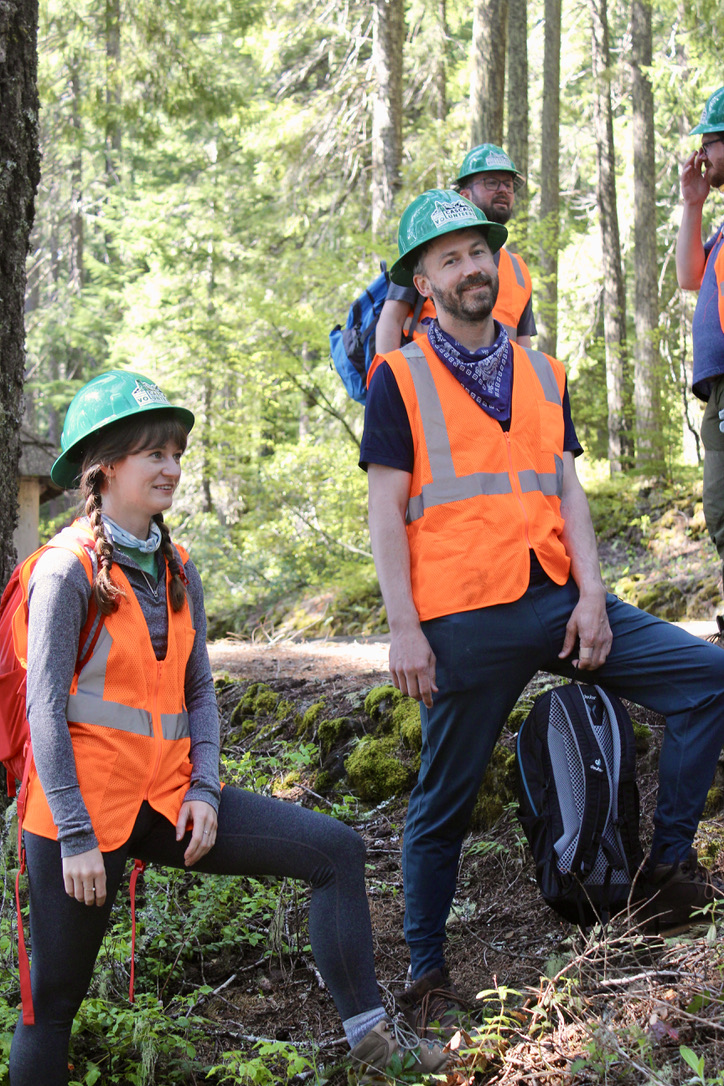
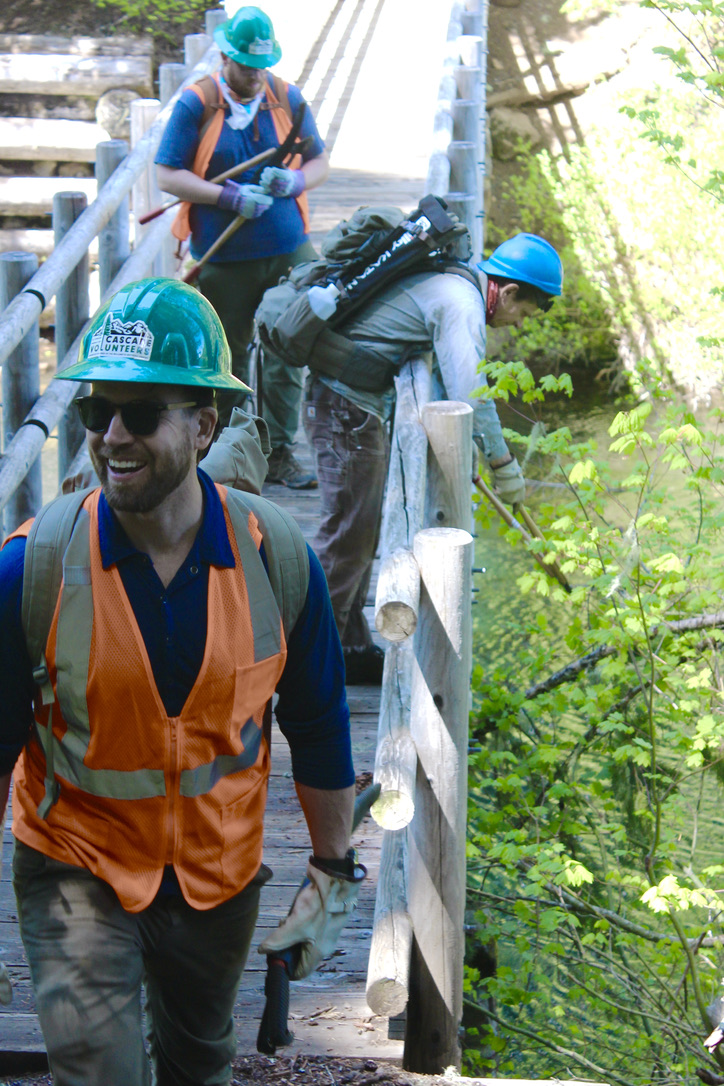
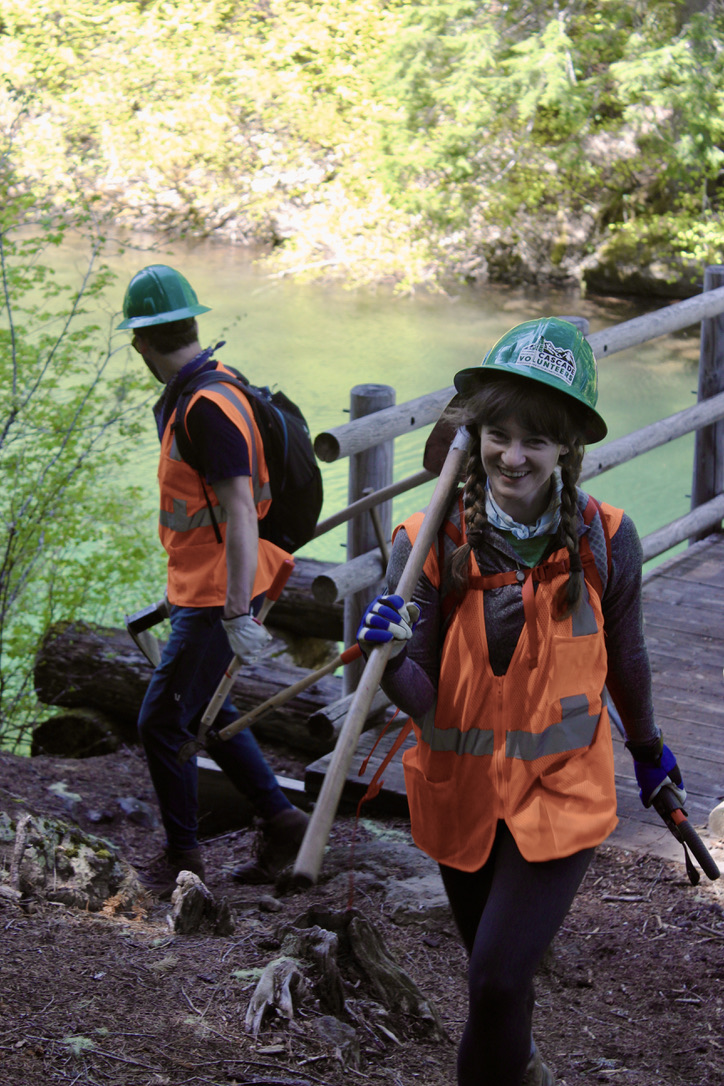
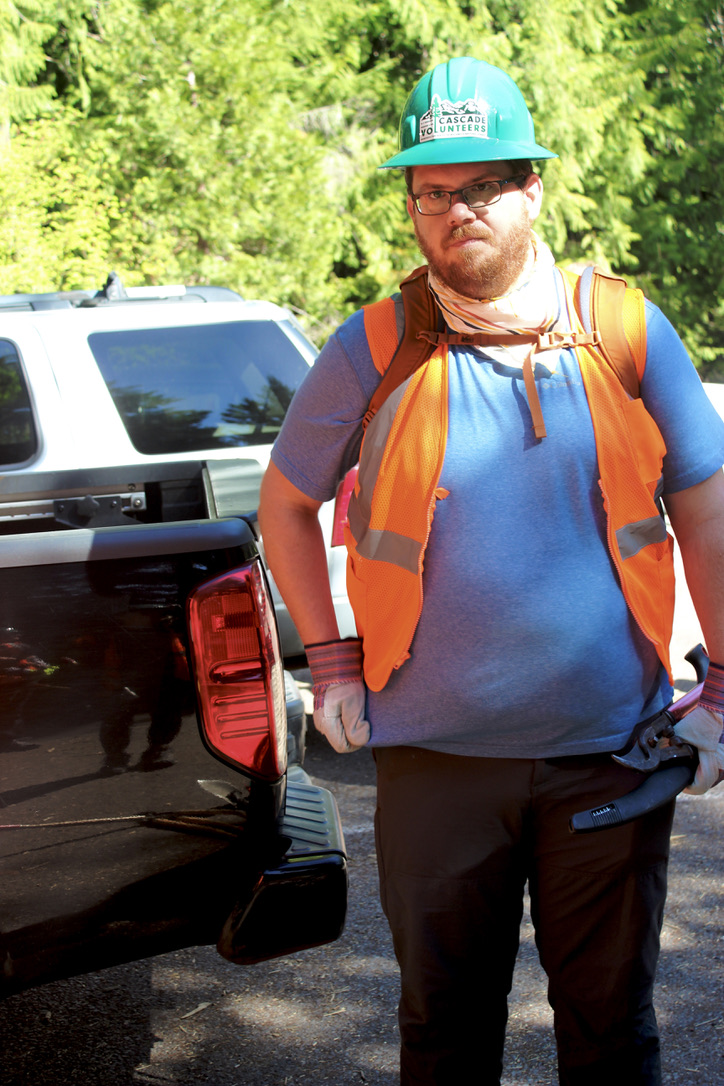
When I turn around to see the crisp edges of the trail behind us, previously shrouded in Vine Maple, I see the value in our work. When I see hikers stopping to consider using a social trail, but see the sticks and logs our group has piled in front of it and instead decides, to respect the trail, I see the value in our work. When I watch my group members holding branches for one another, offering to carry the other’s load, and sweeping the unreachable bugs off one another’s back I see the value in our work. Because it is all about becoming a steward for the environment. In order to do that, we need to not only put in the work but also build the community. Together we are actionable; together we are accountable.
Down the River We Goooo!
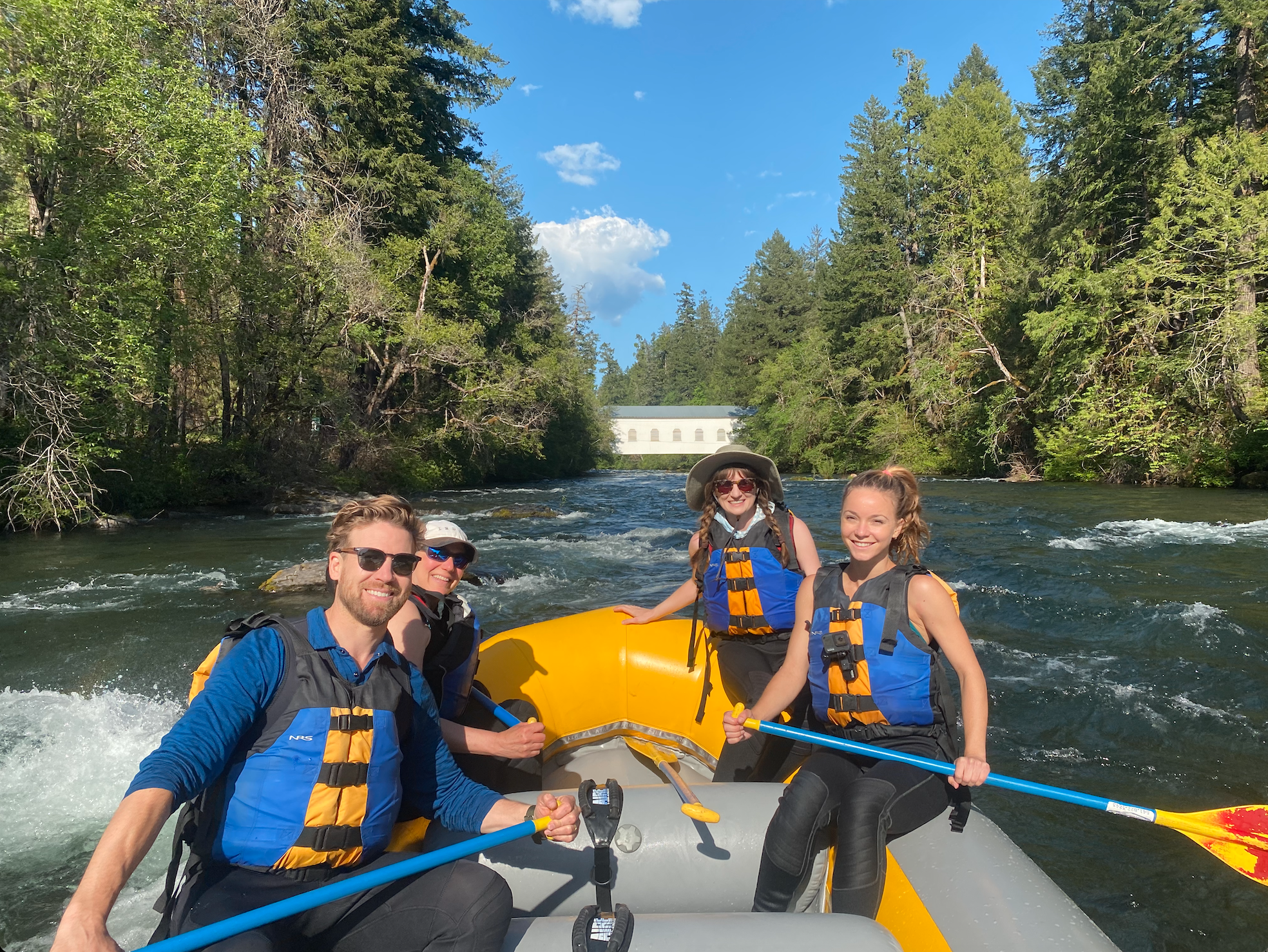
Our reward for a difficult day’s work is a river rafting trip down the McKenzie River. Alex, our mountain biking guide, will take us down the river. He tells us he is able to get us down the river himself, so any paddling we want to do was optional. Perfect. Especially perfect because we are not all that experienced of a group, as Alex can tell by some of our questions like “Should I put my clothes on under or over my wetsuit?” and “Will my Tevas work for booties?” We sat back and relaxed as we wound down the river, hearing the history of the cabins along it. When we reached our first set of rapids, Alex told me to “ride the bull,” which of course I could not refuse. This means sitting on the front of the raft, your feet dipping towards the river, and hold on tight!
“Now it’s time to ride the rapids without the raft!” Alex says as he pulls our inflatable raft up to a tree and ties us up. First, he demonstrated how to jump into the rapids, feet first, and then the current will carry you back to the pool where our raft awaits. (This is dangerous to do if you are not familiar with the river and do not know if the water below is deep enough. Only do this when and where a guide says it is okay!). One by one we shimmy into the rapids, cautiously look over, unable to see anything below the chilly, frothing water in front of us, and then, one by one, we jump! I simultaneously feel like I just had a triple espresso shot and did a rejuvenating yoga flow. It is around 6 p.m. after a full day's worth of trail work and I feel like I had just woken up, fully rested and ready for the day. There is definitely something to be said about a nice polar plunge.
Singing Around the Campfire
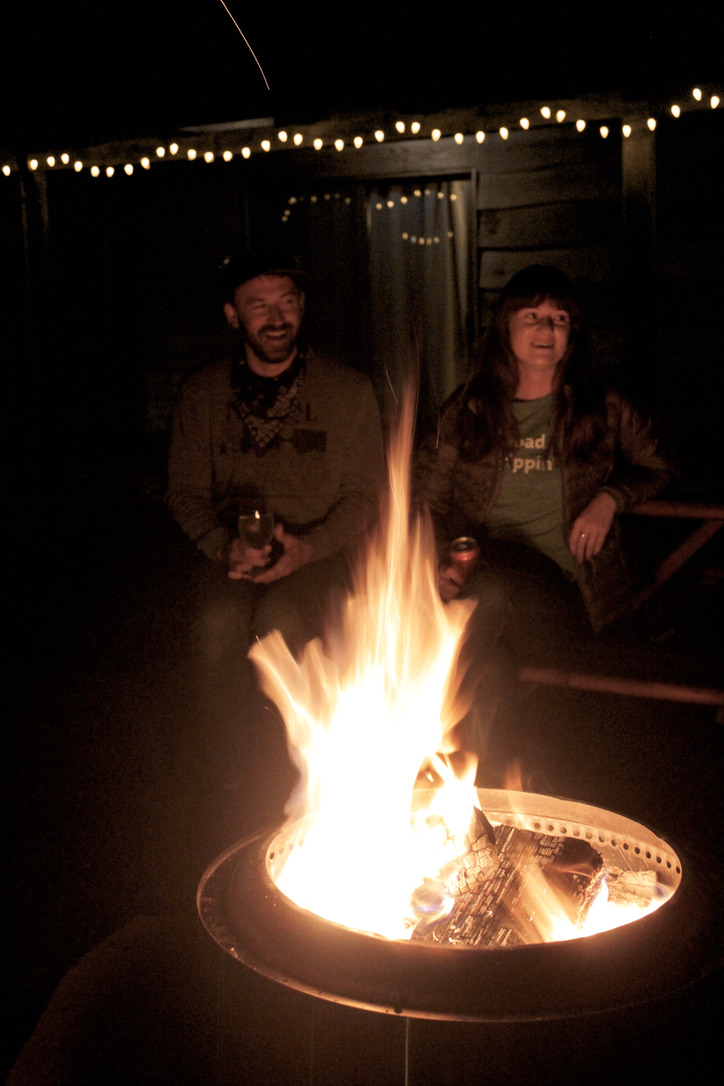
We pick up takeout dinner and growlers from the grill we ate at the night before and head to the Lodge to start a fire. This time we remember to pick up s’mores makings and the sweet teeth of the group go to town. Soon Gary and Alyssa come down and tell us the story about the night of the fire. They tell us about how windy it was and the power lines were down, so they went door to door grabbing their guests and neighbors. Luckily, the fire never touched the property and they were able to return. They also tell us about their neighbor, “One-Shot Dolores” who is an old, potentially senile woman known in the area for killing cougars who threaten her cats with just one shot from a handgun.
[audio m4a="https://www.outdoorjournal.com/wp-content/uploads/Lodge-Love-Song.m4a"][/audio]
It’s not long before Gary pulls out his party trick: a guitar! Alyssa chimes in with an amazing voice and the two have such a great repertoire of songs. They start with Indigo Girls, a little John Prine, Red Hot Chili Peppers, and end with their favorite love song. We all take turns making requests, playing the campfire stove like a drum, singing, and of course, making fun of each other’s singing. The next morning Adam remarks, “all it took was four beers and some altitude for me to realize I can really sing!”
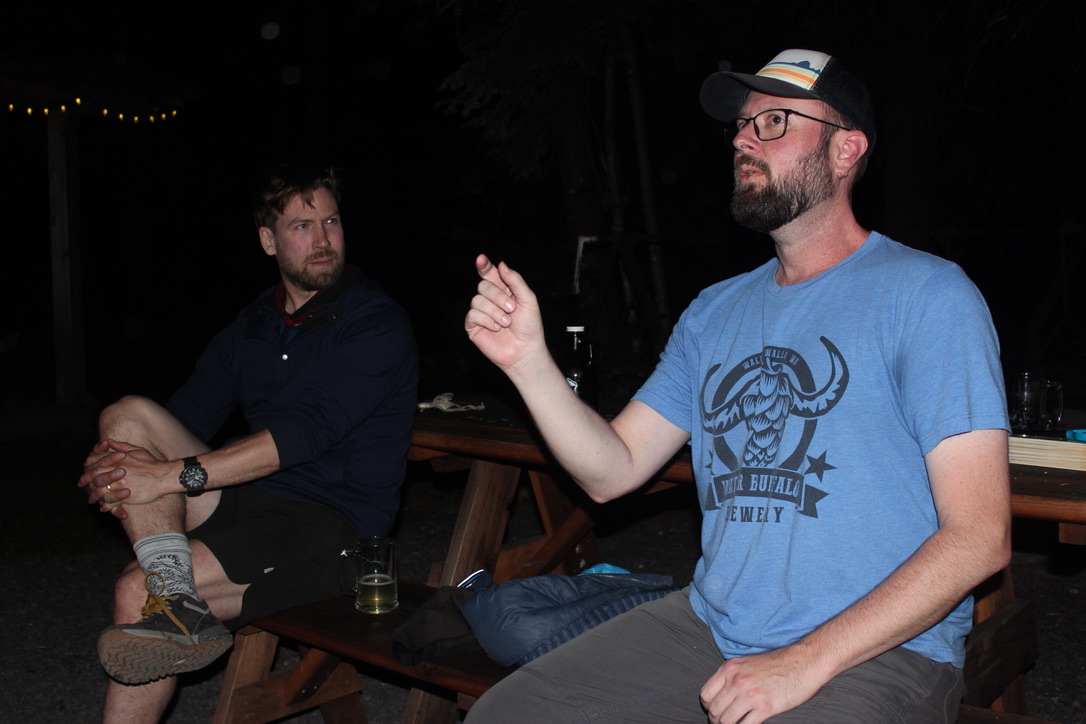
Sahale at Sahalie Falls
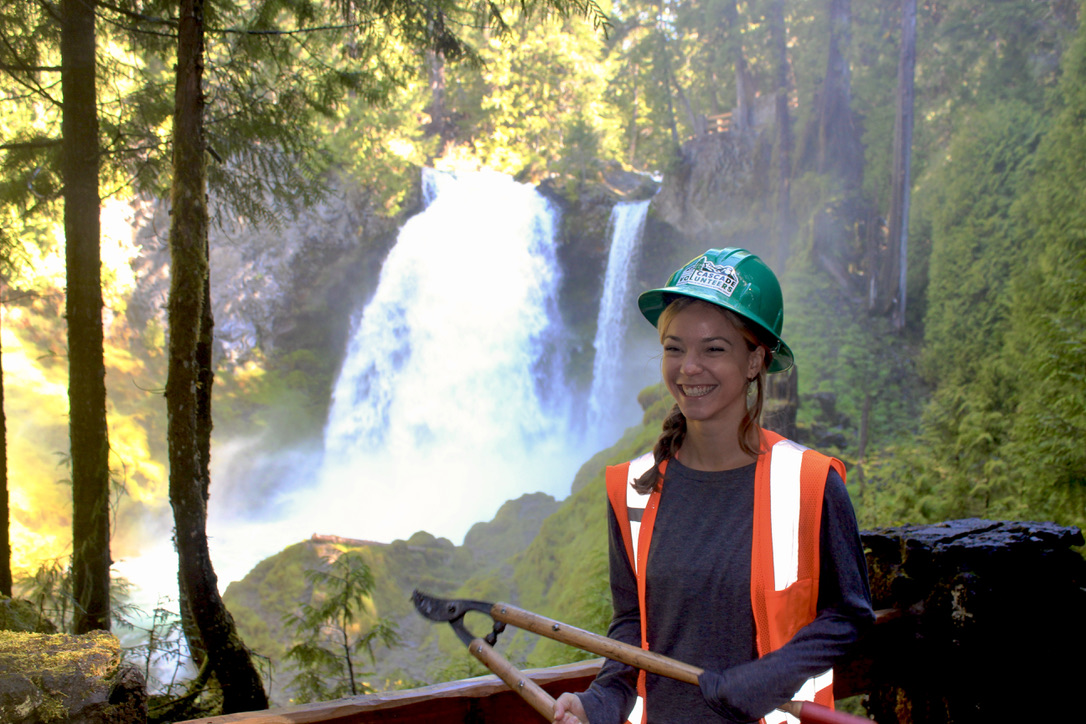
When we arrive at the trailhead of the last day's hike I am ecstatic! I am named after Sahale Mountain in the Cascades up in Washington State that my parents were climbing when my dad proposed. I had no idea the Native American name was also common in Oregon, although with a slightly different spelling. From the parking lot, you can hear the roar of the waterfall. Adam, somewhat of a local expert on waterfalls, says “the percussion of the water hitting the rocks supposedly releases negative ions which enter your body and release positive energy.” The group agrees that the sound of waterfalls is definitely special. But for me, it feels like something more.
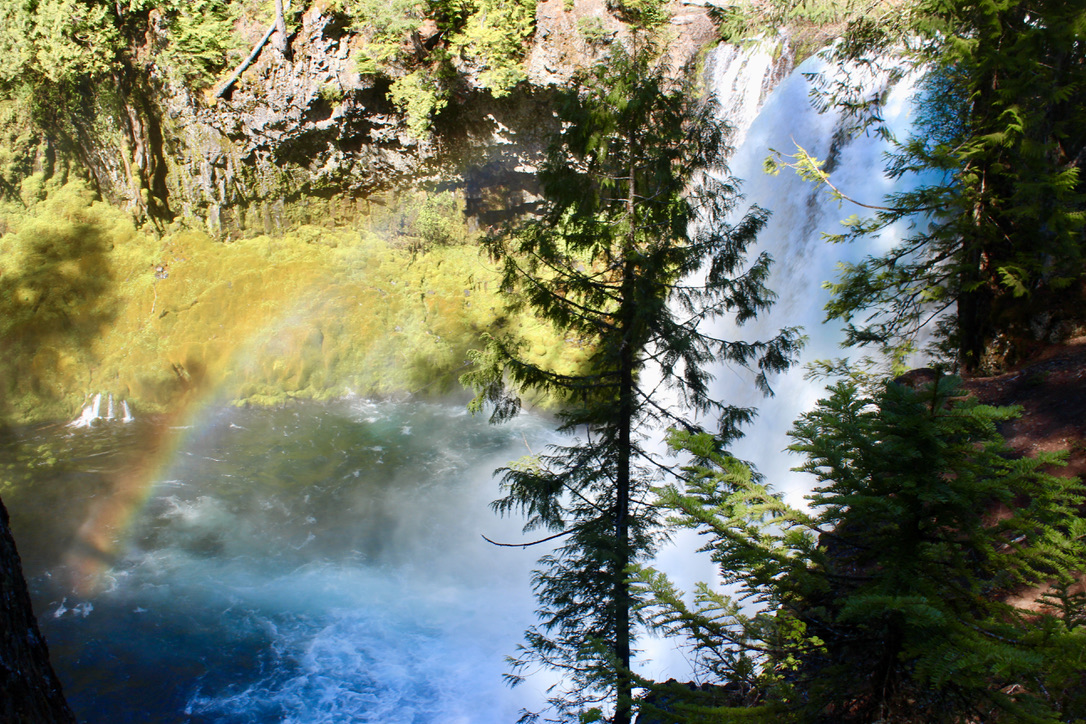
Not only are we doing trail maintenance and giving back to nature but I feel like this particular place I share a special connection. I felt like now, more than ever, giving back to nature is giving back to myself. We remove tilted trees from the trail making it safer for hikers, block off the social paths in hopes that the moss will regrow, and guide the overall flow of trail traffic. But more than that we take on a new piece of ourselves; a new part of our lives. From now on, we are ambassadors for nature. Not only will we work to protect and preserve nature in our lives, but also encourage others to do the same.
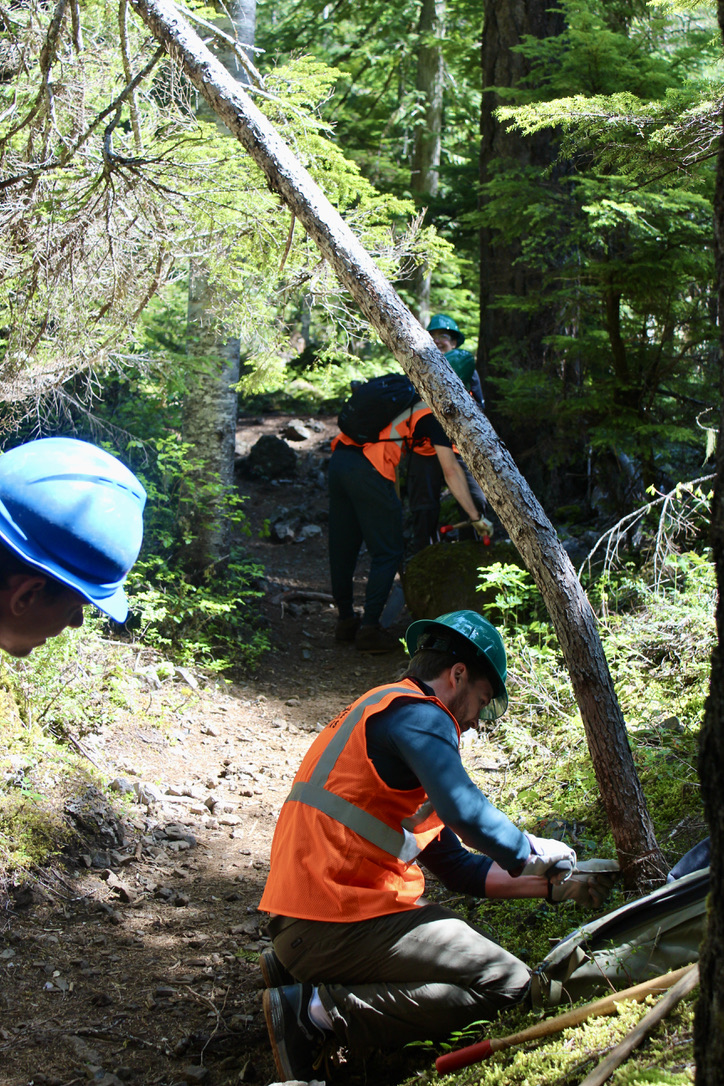
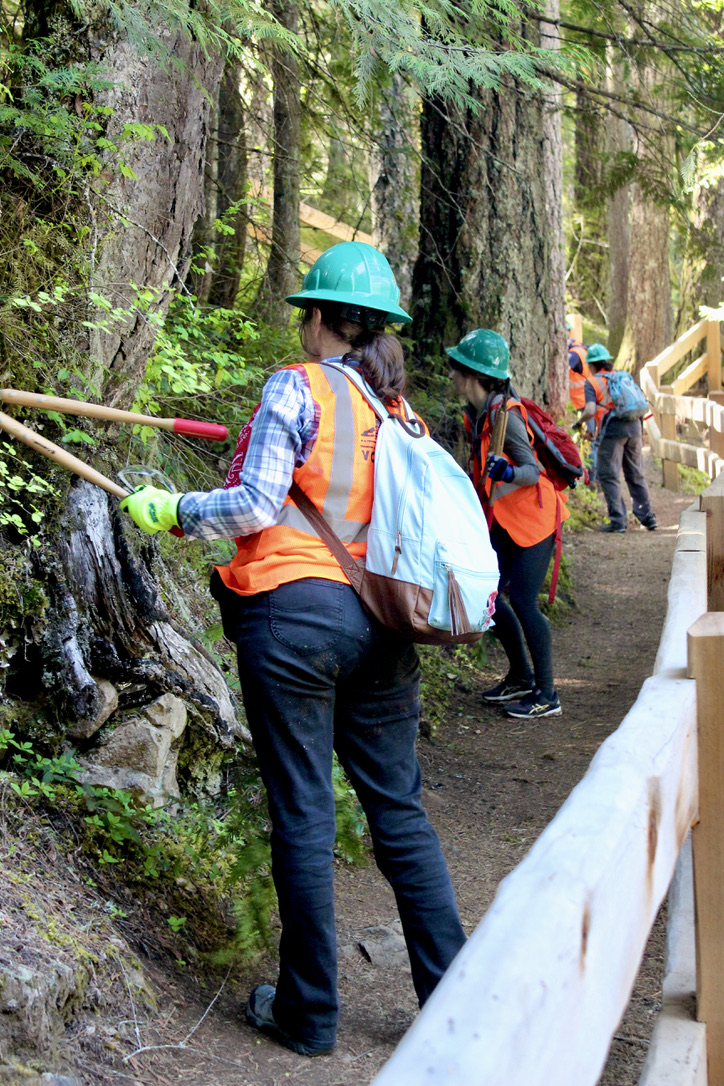
Ultimately, we want to develop a symbiotic relationship with nature, like the lichen that grows in the forest. It is made up of two organisms: the fungus provides the structure and the algae provides the metabolism. Together, they flourish in the forest, but only when the air quality is right. First, we need to clean our air. If we can change our cultural perceptions and understanding of nature, to view it as part of our intrinsically connected world, one larger organism we work with in unison, we can raise the quality of our environment. We can encourage a symbiotic relationship. One where people enjoy nature and use its many resources, but they also give back, they regenerate, they mind their single-use plastics, social trails, organic choices, transportation habits, and overall view of the world, connected through nature.
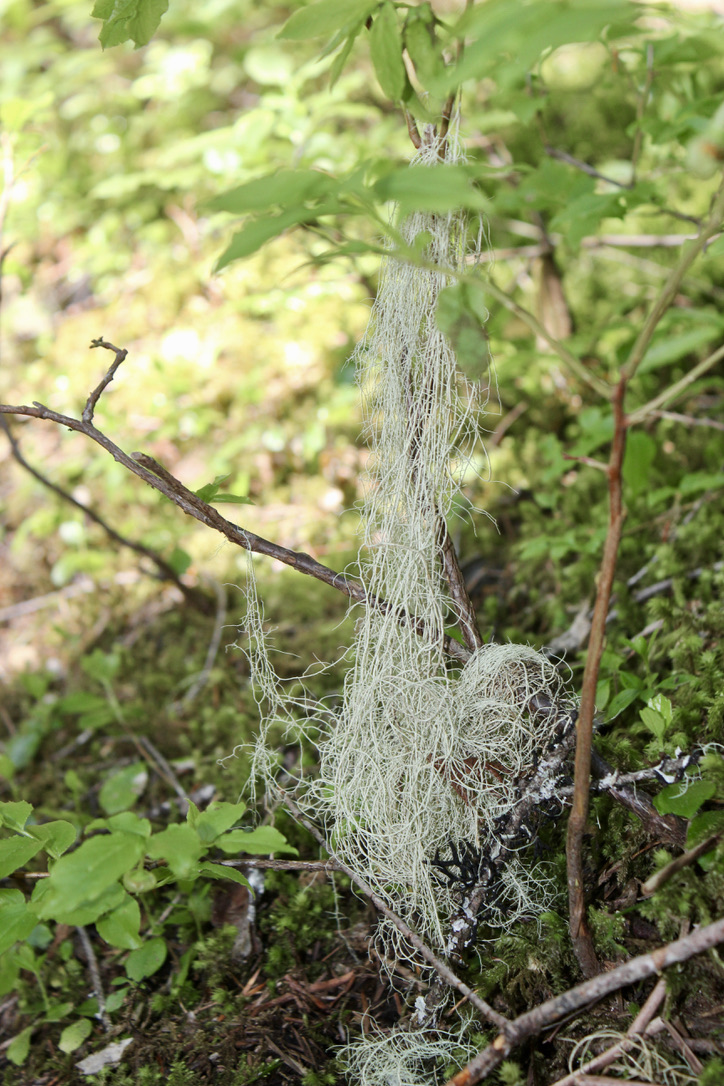
The best way for you to take– take on a new projection, take up a new passion, or take people on adventures–is to give back. Only when you give part of yourself to nature do you get to take some of it for yourself. And believe me, you want a piece of this!
Interested volunteers can book their three-day, two-night volunteer trip with First Nature Tours. If you’re not ready to travel but want to support stewardship efforts on our fire-impacted public lands, donations can be made directly to Cascade Volunteers.
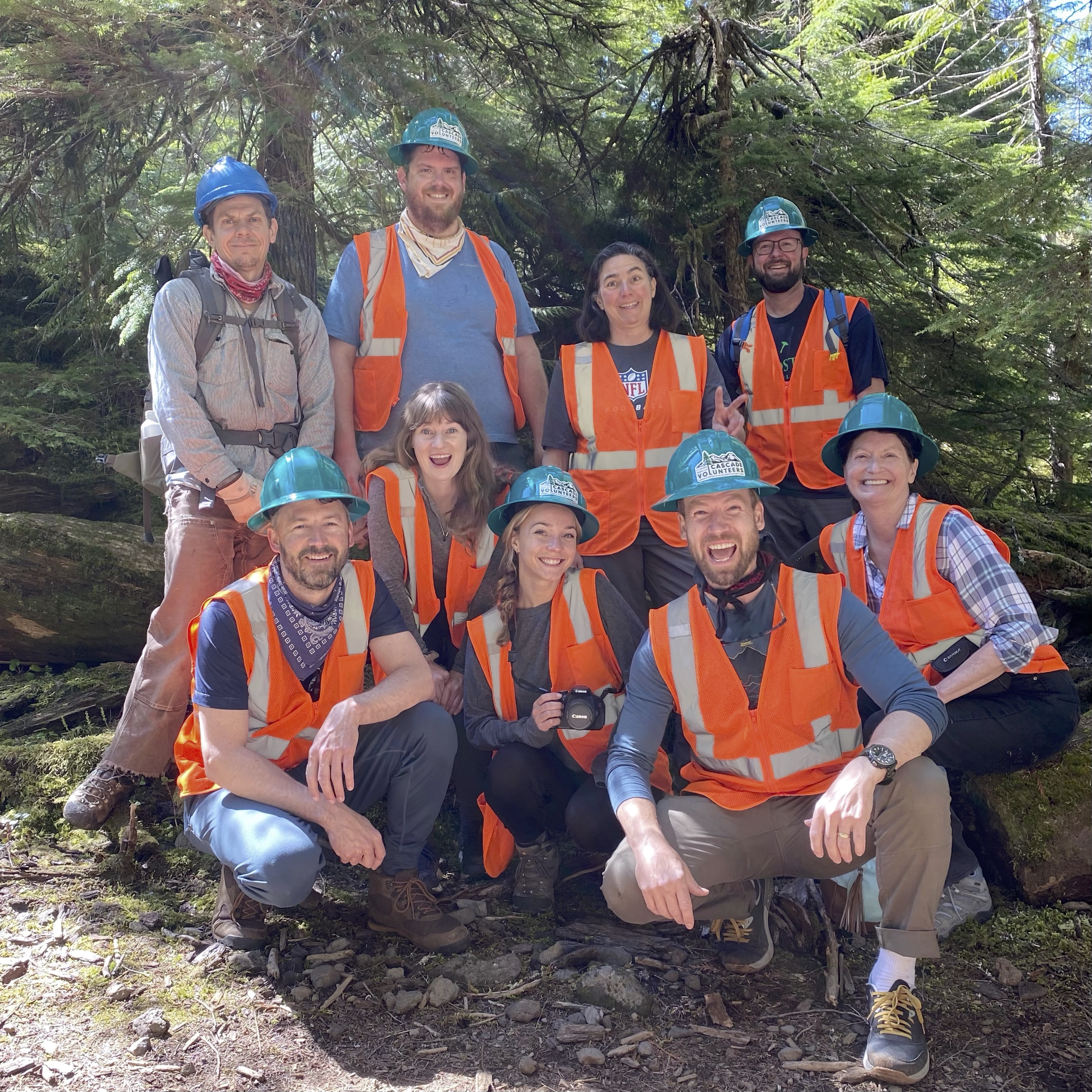
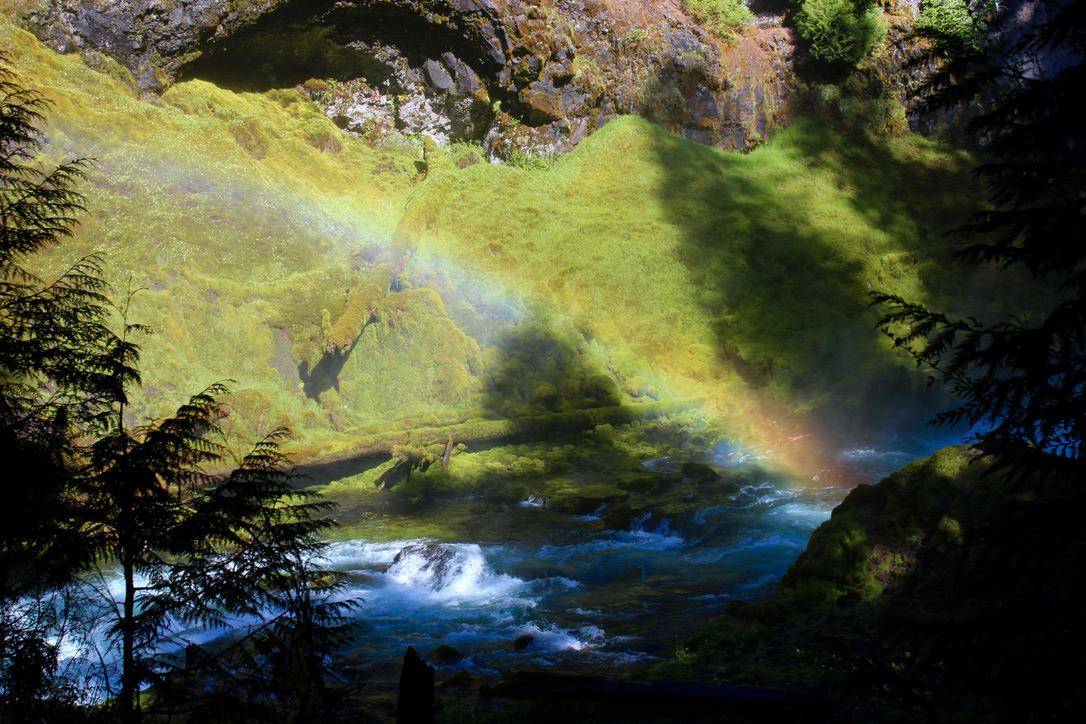



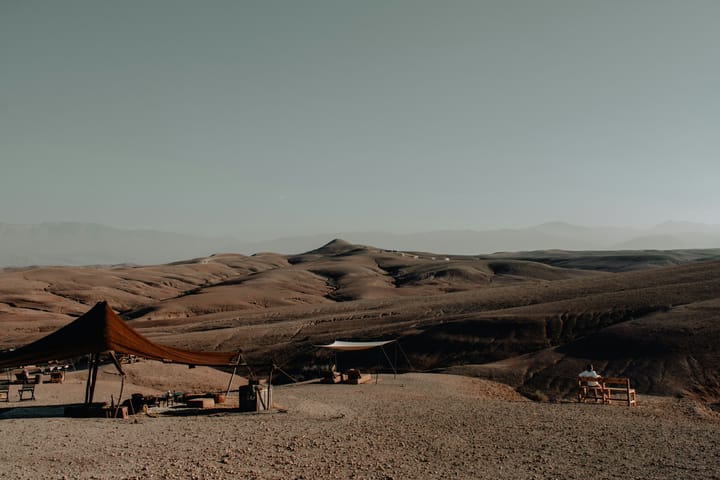

Comments ()